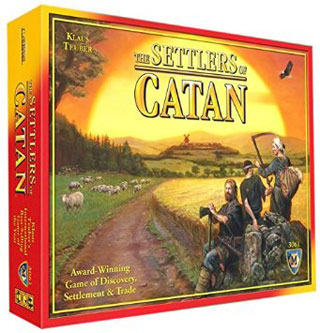
Vol. XVII, No. 4, April 2017
- Editor's corner
- Board games are making a comeback
- Developing experiential CVs
- Only 2 weeks left to register for Foundations Entertainment University to be held in New Jersey
- Increasing adult appeal with slick road course go-kart tracks
- There are 3 elephants in the room: Is a CLV/FEC bubble on the horizon?
- More grandparents than ever
- Less capacity but higher quality increases attendance and revenues
- The difference between failure & success
Board games are making a comeback
It may be a digital world, but consumers increasingly are seeking face-to-face social entertainment from sources that are decidedly analog. This includes board games. In 2016, board game sales in the U.S. grew by 28% according to the NPD Group.
“It plays to the nesting trend,” said Juli Lennett, toy industry analyst at the NPD Group. “More people are binge watching and cooking at home, and they're also playing board games at home rather that going for an expensive night out. Instead of Snapchat or texting, it gives people an opportunity to come together face to face and have fun.”
The interest in board games is benefiting from a growing desire to interact, socialize and have conversation face-to-face away from screens.
The growing popularity of board games is not limited to the home. There are an increasing number of board game cafés and board game bars where people can play board games while drinking, eating and socializing with friends.
One good example is Kingmakers Board Game Parlour with locations in Columbus, Ohio and Indianapolis, Indiana. They have board game sommeliers who recommend and teach selections from a library of 500 games based on the groups and mood of the players. Game play costs $5 per player. According to Milika Jacobs, co-founder of Kingmakers, “People are looking for a way to disconnect from their phones - they enjoy being unplugged and having a conversation with the person next to them.”

While board games may bring to mind memories of playing drawn-out sessions of Monopoly, the renaissance of board games started around five or so years ago with an increase in interest in what are called ‘Euro Style' board games which generally emphasize strategy and co-operation over conflict and luck, and often revolve around economic themes. One of the best examples of Euro Style board games is Settler of Catan that debuted back in 1995 and is considered the godfather of strategy games. The game involves a group of players colonizing an island, building a settlement. Players are required to trade for resources, emphasizing co-operation, negotiation and social skills.
In Pandemic, one of the more popular cooperative games, players work together to stop the spread of four diseases; in Castle Panic, players unite to defend their castle against an invading monster horde. Players of strategic board games can try their hand at competitive farming (Agricola), building railroads to connect cities (Ticket to Ride) and developing a medieval French town (Carcassonne)
This growing trend of people engaging face-to-face while playing board games is supported by the results of a July 2016 survey of 1,000 U.S. adults reported in Technology and Tomorrow's In-Person Social Experiences by Sequence. The survey found that “No matter how many hours we spend immersing ourselves in virtual realities and tapping away on our screens, we crave real-life connectiveness with other human beings.” The survey found that two-thirds of adults (66%) wish more digital games were designed to bring friends and families together. That desire for physical togetherness was expressed by 81% of Millennials, the first and highly digitally connected generation.
The report concluded with “This survey - and the overwhelming success of games like Pokémon Go, for example (97% of Pokémon Go players play in a group) - point to a widely untapped potential in creating more experiences that make social connection a priority. . . In the 10 years since the iPhone ushered in our new relationship to devices, the changes to our society and our daily lives has been dramatic. Our devices are not going away, but there are opportunities to push beyond the screen - to appreciate the power of social connectiveness by turning a exclusive medium into an inclusive one.”
It's not just board games and digital games like Pokémon Go that are benefiting from this trend for social inclusiveness, but also community leisure venues (CLVs) that are remaking themselves as destinations for interactive social games including bowling, bocce, Ping-Pong and escape rooms. This is a trend that offers an opportunity for arcade gamerooms to greatly enhance their appeal, where the majority of the games are still single player rather than group social games.
As human beings, we evolved in social groups where we interacted in the real world face-to-face. That is still hardwired in our brains. Don't overlook that potential to attract people to CLVs that tap that into evolutionary programming.
Vol. XVII, No. 4, April 2017
- Editor's corner
- Board games are making a comeback
- Developing experiential CVs
- Only 2 weeks left to register for Foundations Entertainment University to be held in New Jersey
- Increasing adult appeal with slick road course go-kart tracks
- There are 3 elephants in the room: Is a CLV/FEC bubble on the horizon?
- More grandparents than ever
- Less capacity but higher quality increases attendance and revenues
- The difference between failure & success


